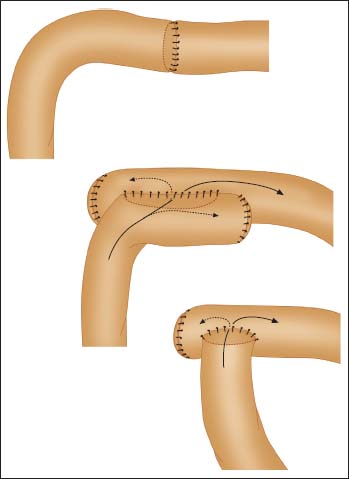| 7 | Normal Postoperative Appearances |
Restoring Intestinal Continuity
Following surgical resection of the colon—whether due to benign or malignant disease—the continence of elimination of feces must be restored. If continuity restores the natural pathway, i. e., so that evacuation occurs transanally, an anastomosis is necessary between resected segments. Continuity can be restored using end-to-end, end-to-side, or side-to-side anastomoses (Fig. 7.1).

Abb. 7.1 Schematic illustration of options for restoring continuity following intestinal resection: end-to-end anastomosis (top), side-to-side anastomosis (middle), end-to-side anastomosis (bottom).

Abb. 7.2 Ileocolic end-to-end anastomosis.
Stay updated, free articles. Join our Telegram channel

Full access? Get Clinical Tree


 Ileocolic anastomosis. An ileocolic anastomosis is an anastomosis between the ileum and the colon (e.g., after a right hemicolectomy). This is generally an end-to-end (
Ileocolic anastomosis. An ileocolic anastomosis is an anastomosis between the ileum and the colon (e.g., after a right hemicolectomy). This is generally an end-to-end (



